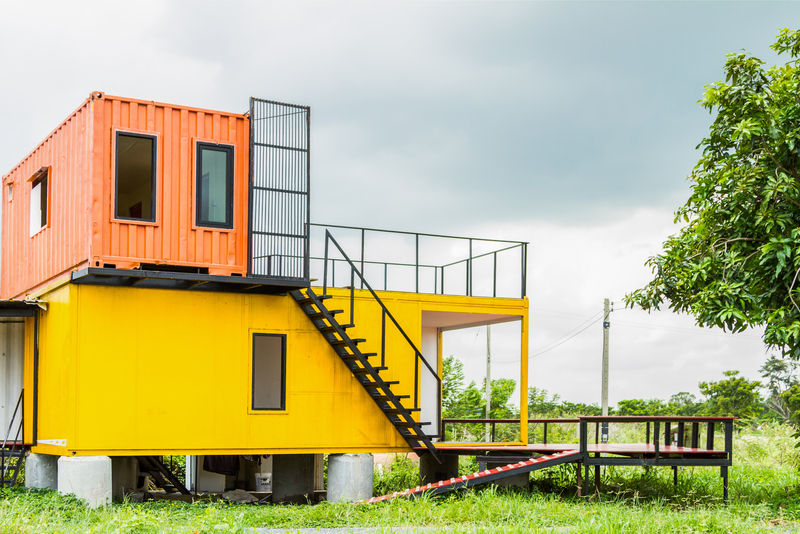Builders Skip: A Crucial Component of Waste Management
Efficient waste management is essential for preserving the environment, ensuring safety, and promoting sustainability within the construction industry. A fundamental tool in achieving effective waste handling and disposal on construction sites is the builders skip. This article delves deep into the importance of builders skips, their diverse types, their operations, and how they contribute to optimal waste management.
What is a Builders Skip?
A builders skip is a large, open-topped container designed for storing and transporting construction waste and other debris. Commonly found on building sites, these skips are robust and available in multiple sizes to accommodate a wide range of waste disposal needs. Builders skips are typically hired from waste management companies and placed on-site to collect and store waste materials until it is ready to be transported to a disposal or recycling facility.
Why are Builders Skips Important?
- Convenience: Builders skips provide a central location on-site for efficient waste collection, reducing the time and effort required for waste gathering and removal.
- Safety: By containing waste within a designated skip, construction sites remain safer, minimizing the risk of accidents and tripping hazards caused by scattered debris.
- Environmental Responsibility: Proper use of builders skips promotes environmentally friendly disposal practices, including recycling and prevention of illegal dumping.

Types of Builders Skips
The builders skip category encompasses various types and sizes to suit different project requirements. Below are the common variations:
Mini Skips
Mini skips are the smallest size, generally ranging from 2 to 3 cubic yards. These are ideal for small-scale renovation or garden clean-up projects where space is limited and waste output is minimal.
Midi Skips
Midi skips offer a moderate capacity, typically between 4 and 5 cubic yards. They are often chosen for bathroom or kitchen refurbishments and can handle a higher volume of building waste compared to mini skips.
Builders Skips (Standard Size)
The standard or traditional builders skip is usually around 6 to 8 cubic yards in size. These skips are the most popular option for construction projects and can accommodate mixed waste, including soil, bricks, metal, and timber.
Large Skips
Large builders skips range from 10 to 16 cubic yards and are ideal for substantial construction activities, site clearances, or demolition work where vast quantities of waste are generated.
How Builders Skips Enhance Waste Management on Construction Sites
Construction projects naturally generate significant volumes of waste. Without an effective system for managing this waste, sites can quickly become hazardous, inefficient, and environmentally damaging. Here's how builders skips play a crucial role in sustainable waste management:
Centralized Waste Collection
- Having a designated skip encourages workers to discard waste immediately, maintaining a clean and organized environment.
- A centralized collection system supports quick clean-up at the end of the workday, reducing delays and improving project timelines.
Promoting Recycling and Responsible Disposal
Reputable waste management companies separate and sort the contents of construction skips, maximizing recycling rates and ensuring that hazardous or non-recyclable waste is disposed of correctly.
- Recycling: Wood, metal, plastics, and other materials can be sorted for recycling, helping to conserve resources and adhere to environmental regulations.
- Proper Disposal: Harmful substances, including asbestos or certain chemicals, can be identified and managed safely, preventing contamination and health risks.
Compliance with Legislation
Using a builders skip helps construction professionals comply with local and national waste management regulations. Many jurisdictions enforce strict rules about site cleanliness, recycling rates, and hazardous waste handling. Skips facilitate adherence to these laws, minimizing the risk of non-compliance penalties.
Key Benefits of Hiring a Builders Skip
Investing in a builders skip for your project offers numerous tangible advantages:
- Efficient Waste Removal: Handles large volumes of waste with minimal effort.
- Site Safety: Reduces clutter and prevents workplace injuries.
- Cost-Effective: Eliminates the need for multiple trips to disposal sites, saving time and transport costs.
- Versatility: Suitable for a wide range of waste materials, from bricks and rubble to household items and garden debris.
- Environmental Protection: Facilitates recycling and proper disposal, reducing the environmental footprint of construction projects.
How to Choose the Right Builders Skip for Your Project
Choosing the optimal skip depends on several factors. Here's how to ensure you select the most suitable skip for your needs:
Assess the Scale of Your Project
- Smaller projects like bathroom remodels may only require a mini or midi skip.
- Larger renovations or new builds usually need a standard or large builders skip.
Identify Waste Types
Determine what materials you will be disposing of. Some skips have restrictions on hazardous waste or require special arrangements.
Consider Access and Location
- Ensure there is adequate space for the skip on your property or obtain necessary permits to place it on a public road.
- Accessibility for delivery and pick-up vehicles should be considered during planning.
Estimate Waste Volume Accurately
Overfilling a skip can incur extra costs and legal complications. Consult with your skip hire provider for guidance in estimating the right size based on your project scope.
Permits and Regulations: What You Need to Know
Certain regulations govern the placement and use of builders skips, especially when situated on public property. Key points include:
- If the skip is placed on a public road, a permit from the local council is usually required.
- Permits ensure the skip does not block pathways, sightlines, or access routes. Reflective markings and lighting may also be mandated for safety.
- Check with your local authority for requirements and arrange permits prior to skip delivery.
Best Practices for Loading and Using a Builders Skip
Proper loading ensures both safety and compliance. Here are some guidelines:
- Do not overfill: Load waste only to the skip's fill line to prevent spillage or hazards during transport.
- Distribute weight evenly: Helps prevent skip tipping and facilitates safer transport.
- Separate hazardous materials: Do not dispose of asbestos, chemicals, tyres, or electrical equipment unless specifically permitted and prearranged.
- Flatten bulky items: Break down larger waste to maximize skip space and avoid voids.
What Can You Put in a Builders Skip?
Builders skips are versatile and accept a variety of construction, renovation, and landscaping waste, including:
- Bricks, concrete, and tiles
- Wood and timber
- Metals and plastics
- Soil and sand
- Old fixtures, such as doors, windows, and cabinets
- Non-electrical fittings
Prohibited items usually include hazardous waste (asbestos, chemicals), tyres, fridges, batteries, medical waste, and electrical items, unless special arrangements are made in advance.
Builders Skips and Environmental Impact
Builders skips are designed not just for convenience but for environmental stewardship as well.
Reducing Landfill Dependency
By enabling systematic segregation and collection of waste, builders skips help divert substantial quantities of reusable materials away from landfills. Construction waste is a major contributor to landfill use, so every effort to recycle and recover materials is significant.
Encouraging Sustainable Construction
Most modern skip hire and waste management companies operate under government regulations that mandate minimum recycling rates. The hire and proper use of builders skips thus aligns your project with the principles of sustainable construction, reducing your overall environmental footprint.
Facilitating Material Recovery
Materials collected in builders skips are transported to recovery and recycling facilities, where valuable resources such as metals and aggregates are reclaimed and re-used in new construction projects, further closing the loop on the materials' lifecycle.
Builders Skip Hire: How Does It Work?
The process of builders skip hire is straightforward yet highly effective in boosting project efficiency and environmental responsibility.
Steps to Hiring a Builders Skip:
- Contact a local skip hire company and discuss your project's size and waste type.
- Book an appropriate skip based on guidance from the company, considering size and location.
- Arrange delivery of the builders skip to your site at a convenient time.
- Fill the skip as your project progresses, following all loading guidance and safety protocols.
- Request collection once the skip is full or your project is complete.
- Waste sorting and recycling occurs at licensed disposal facilities.
Cost Considerations of Builders Skip Hire
The cost of hiring a builders skip can vary depending on several factors:
- Skip size: Larger skips are more expensive but offer better value for major projects.
- Hire duration: Extended hire periods may attract additional charges.
- Location: Delivery fees can fluctuate depending on the distance from supplier to site.
- Waste type: Special handling and disposal of certain waste materials may incur surcharges.
- Permit fees: If a street permit is required, this will add to the total hire cost.

Frequently Asked Questions about Builders Skips
How long can I keep a builders skip on site?
Standard hire periods range from a few days to several weeks, but arrangements can be made for longer durations as required by your project timeline.
What happens to the waste after collection?
Collected skips are taken to licensed recycling and disposal facilities. Here, the waste is sorted, recyclable materials are salvaged, and the remainder is disposed of in accordance with environmental guidelines.
Can I put hazardous waste in my builders skip?
This depends on your provider and local regulations. Typically, hazardous materials require special handling and cannot be mixed with general construction waste in a standard builders skip.
Conclusion: Builders Skips--The Backbone of Waste Management in Construction
Builders skips are an indispensable asset for any construction, renovation, or demolition project. Their versatility, efficiency, and contribution to environmental preservation make them a cornerstone of modern waste management. By choosing the right builders skip, adhering to best practices, and partnering with reputable waste management companies, you not only streamline your project but also ensure safety, compliance, and sustainability.
If you are embarking on a construction journey, do not overlook the importance of hiring a builders skip. It is a strategic decision that pays dividends throughout the duration of your project and helps leave a positive legacy for the environment.
Choose builders skip hire for your next project and experience the difference that professional waste management can make!